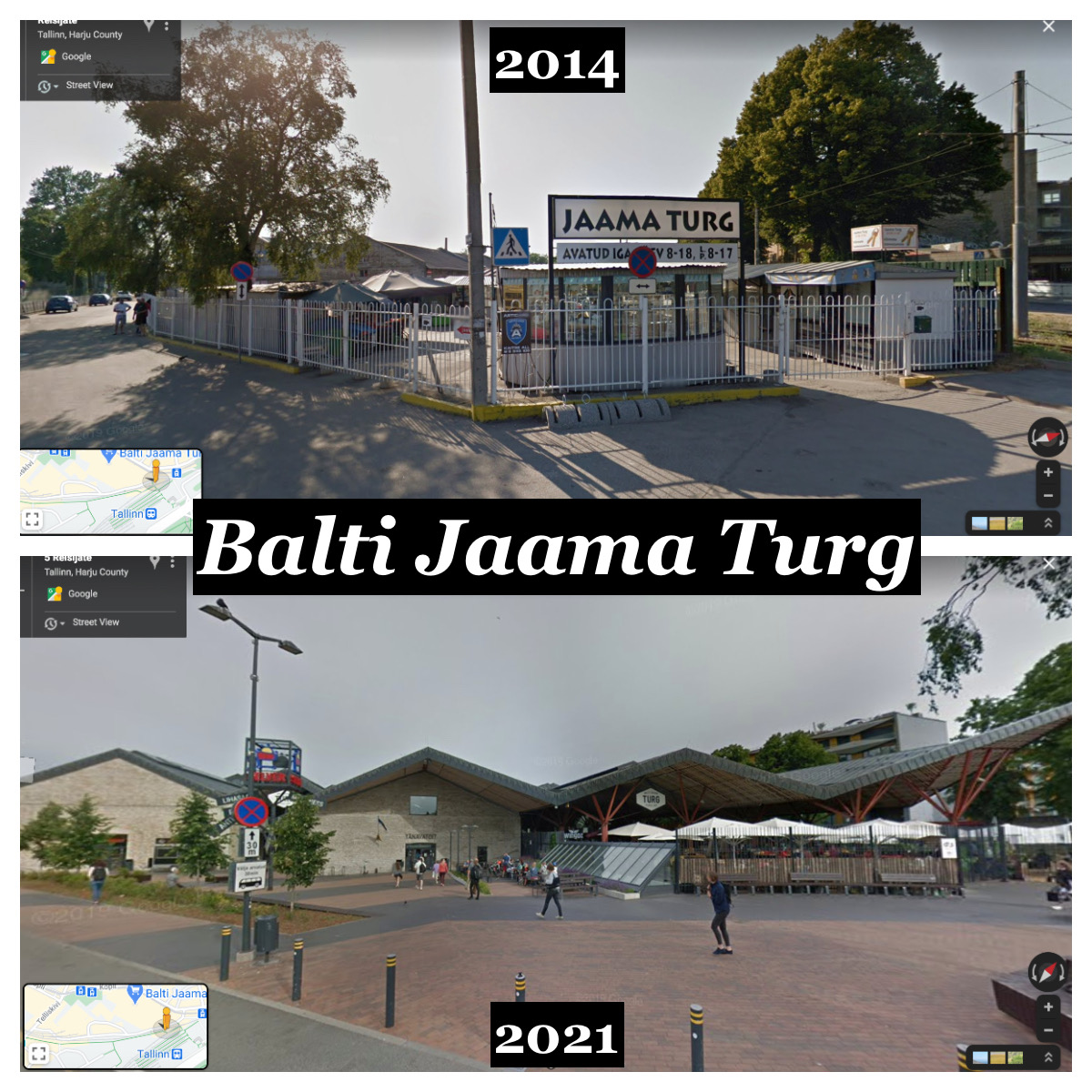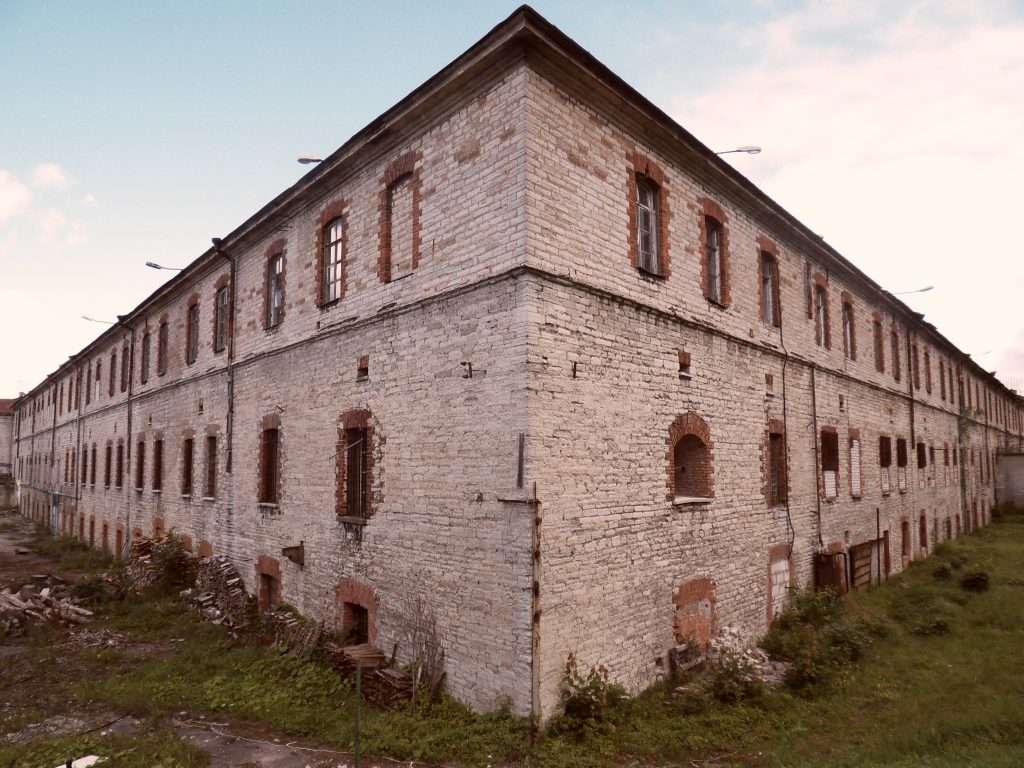Patarei Prison, nestled along the shores of Kalamaja, stands as a haunting relic of a bygone era. For over a century, its towering walls bore witness to the ebb and flow of human suffering and resilience. more “The Final Days of Patarei Prison (1990 – 2005)”
Tag: Memory
2011-2021: a virtual tour and time travel adventure of post-Soviet Tallinn
I’d like to invite you on a post-Soviet Tallinn adventure. Come on an alternative virtual tour through a decade of extreme changes, witness the scale of gentrification and re-live a lost world. more “2011-2021: a virtual tour and time travel adventure of post-Soviet Tallinn”
My Alternative Tallinn Travel Guide: Discover the real Hidden Tallinn
More than ten years of knowledge and experience, in one place. Here is my Alternative Tallinn Travel Guide.
more “My Alternative Tallinn Travel Guide: Discover the real Hidden Tallinn”Exploring the Abandoned Volta Factory
Another rumour circles. Abandoned factory in Kalamaja, easy access and full of trees. It’s time to explore. more “Exploring the Abandoned Volta Factory”
Hara: Abandoned Soviet Submarine Base
It was the last day of our London to Tallinn bike ride and – by sheer coincidence – my birthday. Such days deserve celebration and I cannot think of a finer way to mark the occasion than a visit to an abandoned submarine base, hidden deep in the peaceful forest ambience of Laahemaa National Park. more “Hara: Abandoned Soviet Submarine Base”
Why the construction of Tallinn will never be complete: The Old Man of Lake Ülemiste
A word of warning; should you be out wandering through the Old Town after dark on a cold autumn night and a strange old man approaches you, be wary, for he has a question for you…
“Is the city finished yet?” more “Why the construction of Tallinn will never be complete: The Old Man of Lake Ülemiste”
Soviet Statues – Abandoned and Unloved
The Soviet obsession with statues is clear. From Berlin to Bishkek, the former Iron Curtain cities are littered with these grand images of strength and unity – propaganda and personality cult – like the scattered wreckage strewn across the landscape in the wake of a mighty storm. more “Soviet Statues – Abandoned and Unloved”
Estonian Animation is Utterly Terrifying
“I remember being terrified by the egg”.
While reminiscing with Estonians about the melancholy days of childhood – the long summer days spent cycling through pristine forests, the heady scent of pine filling the nostrils and the hazy summer sunshine flooding the landscapes with a rich, warming glow more “Estonian Animation is Utterly Terrifying”
Re-visiting Patarei: Abandoned Soviet Prison
Guided Tour of Patarei (2014)
“This place is not fit for humans and never has been”
Still utterly fascinating and darkly captivating, Patarei Prison sits ominously on the Baltic coast; more “Re-visiting Patarei: Abandoned Soviet Prison”
The National Song Festival
During my first visit to Tallinn in 2009 I was privileged enough to witness a magnificent spectacle…
25,000 Estonians – young and old – all wearing national dress, standing on a magnificent semi-circular stage in front of a crowd well in excess of 100,000, all singing patriot, historic, emotional songs of freedom more “The National Song Festival”
Tallinn TV Tower Re-Opens
News hot off the press: after lengthy refurbishments Tallinn’s iconic TV Tower has finally re-opened its doors to the public. This is very exciting news for a number of reasons more “Tallinn TV Tower Re-Opens”
Linnahall: Abandoned Soviet-Era Concert Hall
The steps of Linnahall were originally built to signify Tallinn’s status as hosts of the sailing events for the 1980 Moscow Olympic Games. As part of a larger regeneration project – which included the building of a brand new highway, the sailing club in Pirita, the famous TV Tower and even the airport – the I.V. Lenin Palace of Culture and Sport, as it was originally known, is perhaps the only structure which has failed to live up to its billing. more “Linnahall: Abandoned Soviet-Era Concert Hall”
Former KGB Headquarters
There are many remnants of the Soviet era still present in and around Tallinn. All of them provide a tantalising but incomplete glimpse into Estonia’s very recent and repressive past but few instil the same level of fear and intimidation as the former KGB Headquarters. more “Former KGB Headquarters”
World War II Memorial
About 4km away from the Old Town, down the coast towards Pirita sits a very touching monument to the Russian and German soldiers who lost their lives in the second Great War. The striking gateway and sporadic scattering of crosses generate both a sombre and slightly eerie atmosphere while the large list of names creates a very poignant reminder of the price of conflict.
Tallinn TV Tower
Originally built to provide better communications for the 1980 Moscow Olympics, the TV Tower is a fascinating example of Soviet delusions of grandeur. Famously, this huge structure is the site where, in 1991, a handful of radio operators risked their lives to protect the free media of Estonia.
As Estonian independence loomed large on the horizon the order was given for Soviet assault troops to seize the TV Tower, a key pillar of communication to the outside world. Upon hearing this, ordinary Estonians turned out to protect the tower as a small group of brave armed locals barricaded themselves inside, standing their ground against the odds until the tanks were forced to turn back. more “Tallinn TV Tower”
Patarei Vangla: Abandoned Soviet Prison not fit for Humans
The imposing abandoned structure of Patarei Prison, just a stones throw from the main harbour, serves as a stark reminder of the brutality of the Soviet regime and offers a tantalising glimpse into the grim nature of prison life in Estonia during the late twentieth century.
These images were taken on my first visit to Patarei in 2011.
Originally built as a sea fortress in 1840, this formidable compound housed inmates right up until 2002 and has remained almost completely untouched since its closure in 2005. With dead plants still on the tables, beds still made and bars of soap decaying in the showers, this eerie, uncomfortable and dirty place remains one of the most ubiquitous remnants of Tallinn’s dark past. Poignant, thought-provoking and utterly immersive. more “Patarei Vangla: Abandoned Soviet Prison not fit for Humans”
Linda Hill (Lindamägi)
At the top of Toompea Street on the upper side of the Old Town sits a tiny monument depicting a mythical figure – Linda. According to Tallinn folklore, Linda was the wife of Kalev, the man who founded the city. The statue depicts a very solemn figure of Linda with her head bowed, mourning the death of her husband.
This small monument is very important to the people of Tallinn because, despite the fact that the statue predates World War II, the residents adopted it as an unofficial memorial to loved ones that had been exiled to Siberia. Due to the fact that there was no official gravesite or memorial, locals would come and lay flowers by Linda, sometimes at great personal risk. more “Linda Hill (Lindamägi)”
















